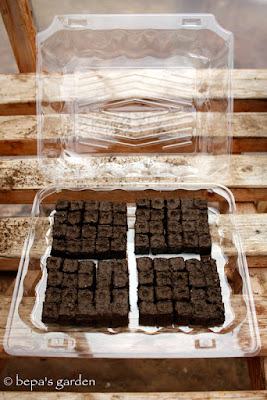It certainly doesn't feel like spring is just around the corner, especially when you look outside, but the grow room is already filled with germinating seeds waiting to make the trip out to the greenhouse, as soon as it warms up a bit of course!
This year I was actually able to start seeds on time so we can enjoy some early crops of kale, lettuce, spinach, cabbage and swiss chard.
 |
| Blue Curled Scotch Kale |
 |
| Lettuce |
 |
| Red Express Cabbage |
For the first time in several years I was able to start the artichoke and celery seeds on time as well. The taste of store bought celery just doesn't compare to celery fresh from the garden, but then again I guess that's true with just about anything!
 |
| Globe Artichoke |
 |
| Utah Tall Celery |
There are also trays of onions, leeks, broccoli, cauliflower and eggplant, as well as flowers and the herbs for medicinal and culinary herb garden. I think it's time for a larger greenhouse!
 |
| Thyme |
I can't believe it's been almost a year since I posted last, but things have been really busy and I have been spending more time to doing and less time talking about it. The school garden project has been consuming a lot of time, but it is well worth it. I have been working on crop planning, plant & harvest schedules and whittling down the 300+ varieties that I have in my seed collection to include only those varieties that we have had success with and want to keep growing year after year.
This year there are some exciting projects planned, like the completion of the garden shed and construction of a self sufficient greenhouse at the school garden. I am also planning on {finally} building the garden shed for our home garden as well as a larger, more permanent, greenhouse so I have the room to grow enough vegetable seedlings and flowers to sell at farmers' markets.
The big goal, as always, is to grow enough food for my family so we can eat mostly from the garden and spend less at the grocery store, and it looks like we are well on are way to doing that this year, weather permitting!
Stay tuned...
~Rob~


























































